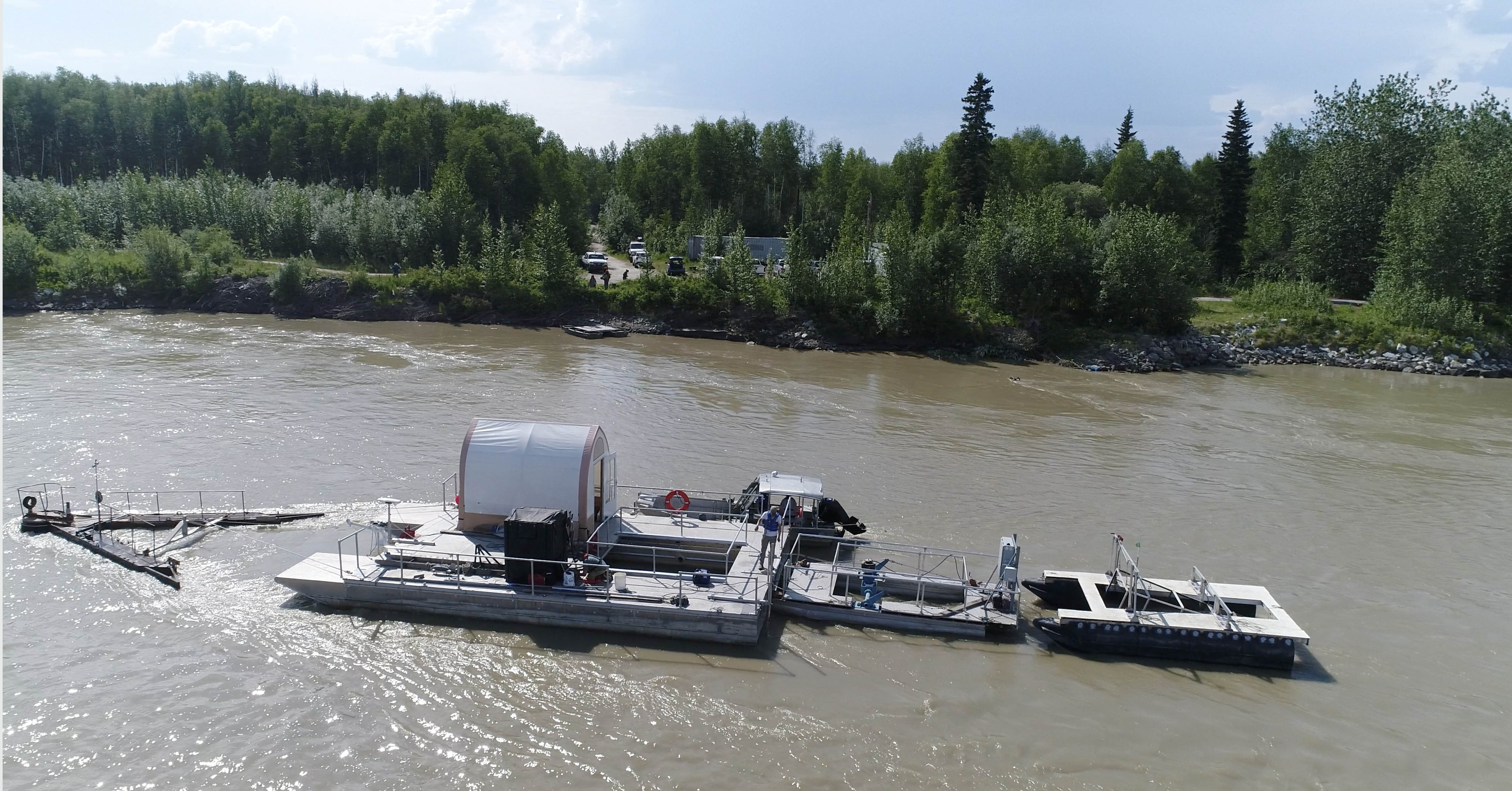Acoustic Cameras Can Help Understand Fish Interactions with Hydrokinetic Energy Systems

While exploring hydrokinetic devices in Alaska rivers, the safety of salmon and other fish must be considered. UAF researchers Andy Seitz and Mark Evans, along with researchers from the Pacific Northwest National Laboratory and the Atlantic Marine Energy Center, used high-resolution multibeam echosounders, or acoustic cameras, to assess collision risk of fish and moving turbine blades in the water. In 2021, underwater video cameras and acoustic cameras at two sites were used to test the ability to detect artificial and real fish targets in river systems.
The results and recommendations of this study were published in a paper titled “Capabilities of an Acoustic Camera to Inform Fish Collision Risk with Current Energy Converter Turbines” in the Journal of Marine Science Engineering.
Fish and artificial target interactions with turbines have been documented, but strike confirmation with an acoustic camera is novel. A 25-kilowatt turbine was tested in a clear-water tidal estuary in New Hampshire. This allowed collection of video camera and acoustic camera data showing turbine-blade strike on tethered artificial fish targets. The turbid, debris-laden water of the Tanana River near Nenana was a perfect site to test a 5-kW turbine. Video cameras couldn’t see through the turbid water, so only acoustic data were used.
It was hard to distinguish small fish and debris in the Tanana River site; however, further work could help make those distinctions.
Fish interaction research was conducted at the Tanana River Test Site near Nenana. Photo by Amanda Byrd.


